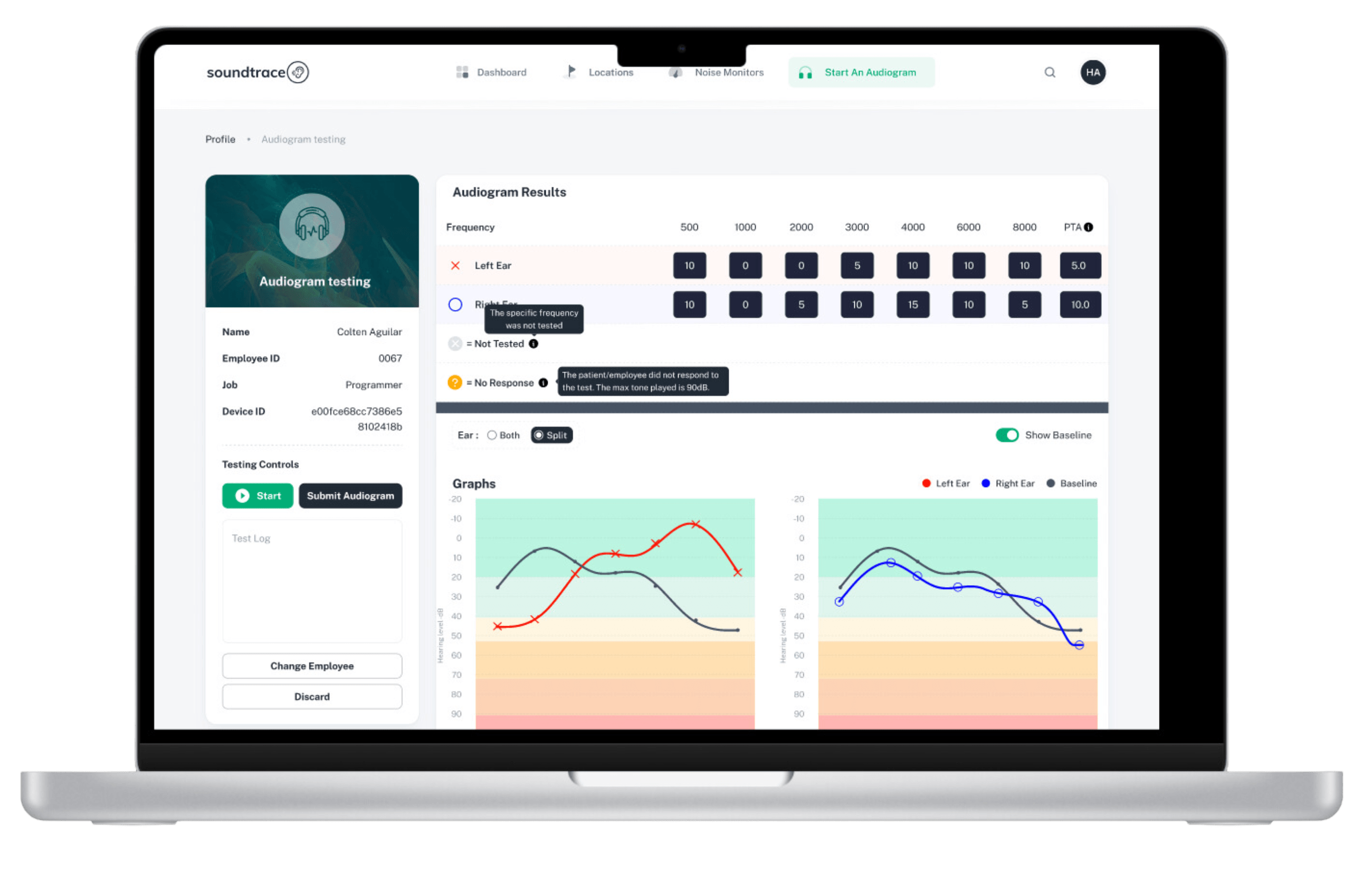Protect your workforce and simplify compliance with boothless audiometric testing services directly at your facility.

Protect your team with fast, accurate audiometric tests and expert support,
right at your facility, delivered by UniFirst.
Boothless tests conducted onsite with minimal disruption, just 5–7 minutes per employee.
Real-time OSHA-compliant reports, audit-ready dashboards, and stress-free documentation.
AI-powered tools track hearing shifts early, so you can take action before damage becomes permanent.
Licensed audiologists review results, confirm shifts, and guide compliance decisions.
60% faster testing, 100% paperless records. Instantly access compliance reports and eliminate paperwork.

Real-time tracking across all locations. Ensure full compliance and audit readiness effortlessly.
Cut downtime by 65%. In-house testing eliminates off-site travel and long wait times.
Note: This comparison is based on publicly available information and industry standards as of December 2024. Features and pricing may vary. For the most accurate details, refer to official sources.

Respirator Medical Evaluations Questionnaires (RMEQ) are assessments conducted to ensure that workers can safely wear and use respirators when exposed to hazardous airborne contaminants in the workplace. RMEQs are offered in both English and Spanish and can be completed online or using a paper version.
Key aspects of respirator medical evaluations include:
- Determining an individual's medical fitness and physical ability to wear a respirator safely.
- Healthcare professionals review the employee's medical history and questionnaire responses.
- Upon completion of the questionnaire review healthcare professionals certify whether the employee is fit to wear a respirator or not.
A qualitative fit test is often used and sufficient in many situations, particularly for half-face respirators, because it is a simple, cost-effective, and portable method that relies on the wearer's sensory detection (taste, smell, or irritant) to detect leaks. It is a pass/fail test and does not provide a numerical measurement of fit, making it suitable for many workplaces where a fit factor of 100 or less is acceptable.
Quick responses to the most common questions about our testing process.
Our audiometer features a built-in calibrated microphone that monitors ambient noise in real-time during the audiogram test. If ambient noise levels exceed the limits outlined by OSHA in 1910.95 App D, the test automatically pauses. This is the only solution on the market with this capability.
No, your team won’t need to conduct the testing. UniFirst handles the process from start to finish, trained and supported by Soundtrace. While a few states have specific requirements, OSHA does not require certification for automated hearing tests as long as a professional supervisor oversees the program, which Soundtrace provides.
Yes, our audiometer complies with all required OSHA and ANSI specifications. Additionally, our platform, training, and audiology support meet all requirements as outlined in OSHA 1910.95.
Yes, our software automatically calculates whether an employee has a standard threshold shift. If a shift is detected, our audiology team initiates a review workflow and guides your team through the necessary steps.